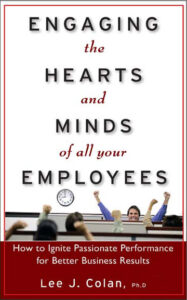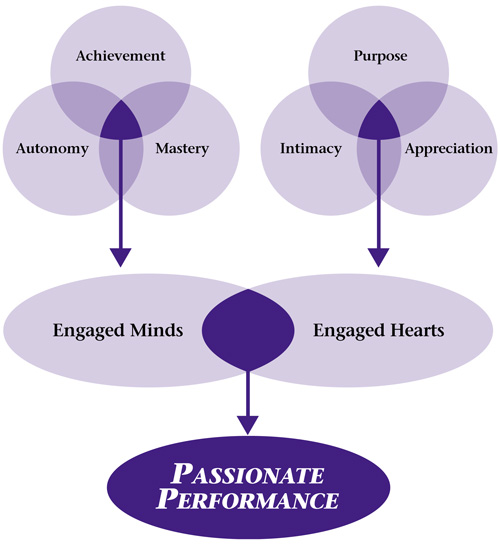In today’s hyper-competitive market, creating sticky customer relationships is paramount.
After all, keeping existing customers is five times less expensive than finding new ones. That’s good business in anyone’s book.
Traditional competitive factors like product design, technology and distribution channels are harder to sustain in a super-fast, mega-networked world. In fact, the good old “Four P’s of Marketing” – product, price, promotion and placement – are having much less impact for companies competing in today’s marketplace. A fifth “P” – people – has become an increasingly important competitive factor.
Consider this: About 70% of customers’ buying decisions are based on positive human interactions with sales staff. Add to this the fact that 83% of the U.S. gross domestic product comes from services and information which are created and delivered by people. The bottom line is that people buy from people, not companies. So, your people – and the performance they deliver – are the defining competitive advantage for your organization.
The Anatomy of Passionate Performance
Think of the times you’ve gone shopping or to a restaurant and dealt with service people who were visibly excited to be in their jobs and to be serving you. Their words jumped out of their hearts rather than being regurgitated from a script. They probably surprised you with the extra effort and thoughtfulness they put toward satisfying your particular needs or questions – and they actually seemed happy to do it!
Now, consider how you felt when you left these establishments. Did you buy more than you had planned? Were you likely to return? Did you recommend these businesses to friends? You probably answered “Yes” to at least one of these questions. That’s the beginning of a value chain that starts with engaged employees.
When people are engaged in their work and feel a deep connection to it, they deliver Passionate Performance. Passionate Performance creates satisfied customers, and ultimately, value for the organization.
Some people are naturally engaged in their work and consistently deliver Passionate Performance. The most effective leaders learn how to bring these qualities out in everyone. They invest time, energy and resources to engage their people because engaged employees are more likely to:
- stay with the organization;
- perform at higher levels;
- influence others to perform well;
- promote the organization externally; and
- deliver unparalleled customer service.
The key to Passionate Performance is found within the minds and hearts of employees where basic human needs are fulfilled. It’s a simple but powerful formula: When my needs are fulfilled, I am engaged and I perform at my peak ability. When my needs are met, I’m motivated to help those who meet my needs. When my needs are not met, I’m frustrated, out of control, unfocused, and disconnected – in a word, disengaged.
We all have these basic human needs, and they have remained the same amidst the tornado of external change. Times have changed, and our world has certainly changed, but people have not.
To meet these needs, leaders must first see them and acknowledge them. In order to see them, leaders must view their employees as people and not just workers. If you look at your employees as people, you can identify these six basic needs – three intellectual and three emotional:
These needs are interdependent. For example, to engage the minds of your employees, you must fulfill all three intellectual needs: achievement, autonomy and mastery. The same holds true for the emotional needs. Therefore, achieving Passionate Performance is a two-sided challenge: intellectual and emotional. Successful leaders engage both the minds and hearts of their people.
Engaged minds boost performance and engaged hearts ignite passion. Performance without passion tends to falter during tough times or in the face of challenges that require sacrifice, significant extra effort or unusually creative solutions. On the other hand, passion without performance results in diffused, unfocused efforts.
 Engaging the Mind
Engaging the Mind
Engaging employees’ minds tends to come naturally for many leaders. The mind represents the intellectual aspects of people that are based on reason, logic, and cause and effect. It requires the science of leadership which is the focus of most leadership training and education. Engaging the mind builds employee performance.
Elevating employees’ performance by engaging their minds involves the basics of leadership, but the basics are often overlooked. Even the best professional athletes can lose site of the basic skills of their sports: An all-star wide receiver takes his eyes off the ball and misses an easy touchdown pass. An Olympic downhill skier doesn’t stay in a tight tuck, catches a draft and eats snow. A world-class golfer forgets to shift her weight during a tee shot and shanks it.
It’s no surprise that, as leaders, we can also sometimes forget the basics. The basics of our “sport” involve meeting employees’ three intellectual needs: Achievement, Autonomy and Mastery.
When you fulfill these needs, you create a self-reinforcing cycle of improvement, growth and high performance for your team. The mind is a muscle. It must be exercised or it will weaken. Engaging the mind is a form of mental exercise – it strengthens your employees’ ability to perform. Engage their minds and watch their performance grow!
Engaging the Heart
Engaging the heart tends to be more challenging for leaders than engaging the mind. It’s the softer side of leadership, but it’s often harder to get your hands around. Traditional leadership development programs don’t emphasize the skills necessary to engage employees’ hearts, and many organizations don’t reinforce these skills with their leaders. As a result, many leaders tend to be less comfortable with this side of engagement because they simply have never learned how or what to do. Emotional engagement creates an advantage that is very difficult for your competitors to duplicate, so it’s worth learning to do well.
The heart represents the emotional side of people that is based on connections. This side requires the art of leadership that focuses on relationships. Engaging the heart creates passion. Although we might like to think otherwise, the truth is that we live in a world driven by emotional decisions.
Remember that 70% of customers’ buying decisions are based on human interactions. Likewise, employees are primarily driven by emotional and personal considerations. When people go to work, they don’t leave their hearts at home. We may live in a high-tech world, but leadership is still a high-touch job.
How often do you hear people speak with envy about companies with “real heart” – companies like The Container Store, Southwest Airlines, Harley-Davidson, Enterprise Rent-A-Car and Chick-fil-A? Outsiders are constantly looking for their “secrets” to success. The secret lies in the hearts of their employees. These companies have created connected teams and, as a result, have built dominant businesses.
If you’re going to engage your employees’ hearts, you must first meet their basic emotional needs: Purpose, Intimacy and Appreciation.
When you fulfill these needs, you create self-reinforcing connections – connections between your employees and you, between their work and their purpose, and between each other. These connections establish strong, intangible relationships that yield amazing tangible results. Engage employees’ hearts and watch their passion grow!
Leading the Way
Leading the way to Passionate Performance for your team is a big responsibility. As a leader, you’re the only person who can engage your employees. It’s not your boss’s responsibility or Human Resources’ – it’s yours. Engaging employees is a personal matter, not a company matter.
Get started by taking this Free on-line self-assessment to gauge you leadership engagement.
Meeting your employees’ needs and engaging them is a long-term process, and there are no shortcuts. Prepare for a marathon versus a sprint. And there may be some bumps in the road. You may not see the sparks of Passionate Performance until you are well into the race and feeling weary, like you can’t go on. That’s usually about the time your team seems to give it all back, and you see the positive results of your efforts. It’s like the “runner’s high.” Suddenly your team’s success appears effortless – you are in the zone. Only you and your team can fully appreciate the simplicity and hard work behind your winning ways. Best of all, everyone on your team will deliver Passionate Performance every day. You will win the race and conquer the competition!


